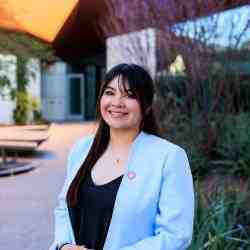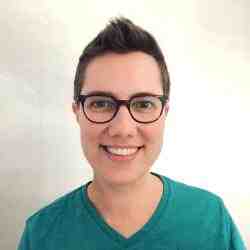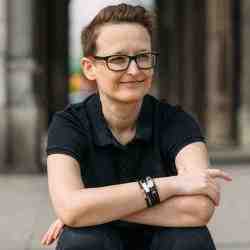Introduction
As learning disability diagnoses increase at rates higher than the capacity of systems, and many affected children and teenagers suffer from depression and isolation, Francesca is creating a role for psychologists in helping children, parents and schools to shape the future pathways for children not based on their lack of learning but on their potential.
The New Idea
Francesca aims to create a world where every child and teenager with learning disabilities becomes aware of their individuality and their potential to reach the goals they set for themselves. She promotes the awareness and expression of individual potential through combining applied research, psychological intervention and new technologies for children and their families.
Ten percent of teenagers and pre-teens in Italian schools have learning disorders. While there is a wide range of mental disabilities, learning disorders are not included within this category although they deeply and negatively affect a child’s social life. Services for children and teenagers with learning disabilities are often focused on curing the symptoms of the problem. In fact, public and private services are specifically aimed at reducing the symptoms, particularly by helping children and teenagers reach certain school standards.
Francesca has prototyped a new model in which psychologists support children in finding their own path and talents with evidence-based work. In this model, the psychologist facilitates a child’s creativity by collaborating with the child to create new digital technologies so that they can find solutions to their personal needs. This leads to improved performance in school, social skills and motivation due to the increased esteem in their own abilities. What before was seen as an inability to learn, is now transformed as a tool of strength, giving children the power to create innovations that serve themselves and other individuals facing the same challenges.
Her model has been replicated in 26 Italian cities. Furthermore, she has been transforming communities for years by changing the way schools determine success—engaging children and their families in the transformation of supposed weakness into a focal point of empowerment. She has opened counseling centers and has created a master’s degree to train psychologists in her new methodology—all in the attempt to create a more inclusive society where each child’s strength can be used for innovation.
The Problem
The Financial Crisis of 2008-2012 resulted in many Western states implementing cuts in health and social care. There is evidence of the impact of austerity policy on the lives of people with learning disabilities (LDs) and the collateral effects on the people who support them. Italy has yet to fully recover from that crisis: in this current climate of economic austerity, available funding to support people with LD is no longer aligned to their care needs. Cuts in disability services have adversely affected the well-being both of people with LDs and their informal careers. Individuals with LDs have lost social support and are experiencing increased social isolation.
Between 25 and 40% of people with learning disabilities also experience mental health problems. Generally, one in four people experiences a problem with mental health in life. Children and adults with learning disabilities and other forms of disabilities are not exempt from this. For children and young people, the prevalence rate of a diagnosable psychiatric disorder is 36% in children and adolescents with learning disabilities, compared with 8% of those who do not have a learning disability. These young people are also 33 times more likely to be on the autistic spectrum and are much more likely than others to have emotional and conduct disorders. Children and young people with learning disabilities are much more likely than others to live in poverty, to have few friends and to have additional long-term health problems and disabilities such as epilepsy and sensory impairments. All these factors are positively associated with mental health problems: People with learning disabilities demonstrate the complete spectrum of mental health problems, with higher prevalence than found in those without learning disabilities (Source: Mental Health Nursing of Adults with Learning Disabilities).
When children have physical health problems, schools are soon aware of them. Similarly, awareness-raising activities on the importance of physical health are commonplace, whether the focus is on nutrition, hygiene or sport. But although children are equally likely to suffer from mental as physical health problems, mental health is much less likely to be addressed in schools. Mental health problems develop early. Research shows that 50 % of adult mental health problems start before the age of 15 and 75 % of before the age of 18. A 2015 project on mental health in schools in Europe found that around 10 % of school students aged 6-11 had problems requiring mental health care. To put this another way, in every primary school classroom there are on average two to three children with a mental health issue. Schools struggle with mental health problems as they are overwhelmed by teaching targets and can’t take care of other wellbeing aspects.
Generally, society sees mental disabilities as a deficit that needs to be fixed or as a problem that needs to be supported. Schools and work environments are standardized and do not give enough attention to individual differences. Adolescents and their families are not aware of the reasons for their academic and social difficulties. Therefore, children perceive themselves as unintelligent and often stop studying, working and begin downsizing their dreams and goals because they lose drive and determination. Since special educational needs aren’t given the attention they deserve, 10% of adolescents are at risk of: developing psychopathologies such as anxiety and depression (Marinelli, 2017); dropping out of school (Cardinali and Craia 2017); social isolation (especially those with FIL, high functioning autism and mild intellectual disability) (Heiman and Olenik-Shemesh 2017); cyberbullying (Dawson, Wymbs, Evans and DuPaul 2019); and becoming a NEET Not in Education, Employment, or Training, (Nagata, Nagata, Inoue and Mori 2019).
Children’s development and learning are shaped by interactions among the environmental factors, relationships, and learning opportunities they experience, both in and out of school, along with physical, psychological, cognitive, social, and emotional processes that influence one another—both biologically and functionally—as they enable or undermine learning (Fischer & Bidell, 2006; Rose, Rouhani, and Fischer, 2013). However, our society and our schools often compartmentalize these developmental processes and treat them as distinct from one another. This assumption leads to a fragmentation of professional approaches when it comes to children’s and teenagers wellbeing. Public and private services are specifically aimed at reducing symptoms: there are psychological support services (to teach reading in cases of dyslexia, training for attention in ADHD children), after school programs, and compensatory technologies to help adolescents to reach school standards. Services to encourage job placement are not individualized nor offer standardized opportunities.
The Strategy
Francesca’s work is focused on creating technological innovations in collaboration with children between the ages of 11 to 18. Through a series of analyses she determines each child’s strengths and weaknesses and enables them to construct innovative systems and web solutions to their own problems. These solutions have been created by the children themselves, the primary people that will be using and benefitting from them. Francesca wants to promote awareness in every adolescent that she works with and to support them in the realization of their changes and growth, which goes beyond just attempting to fix their learning disability.
Through her organization, Tice, she tests her innovations and then spreads her model by teaching it to other psychologists through a Master’s degree program. All innovations are also tested with universities to ensure her new ideas are backed by evidence. Additionally, Francesca is bringing a new assessment system to Italian school systems to make them more inclusive of students with learning disabilities.
Francesca’s core model changes the way psychologists approach their work by engaging not just the children, but their families and communities. One level of her work is to interact with each child through the Applied Behavioral Analysis approach. ABA is a system of autism treatment based on behaviorist theories which, simply put, state that desired behaviors can be taught through a system of rewards and consequences. ABA can be thought of as applying behavioral principles to behavioral goals and carefully measuring the results.
Francesca, with the guidance of psychologists and other experts in the field, has designed an incredibly thorough action plan that is divided into the five following steps.
1. Critical assessment: a critical assessment of the participant’s skill is undertaken by executing four different 4-hour meetings where their level is determined through task analysis. They are evaluated based on their ability to independently carry out personal, life, scholastic, and community functions. The scope of this assessment is to have a critical and measurable understanding of each individual’s abilities, strengths and weaknesses to begin laying the foundations of what will be needed to develop their aspirations.
2. Relationship and soft skills assessment: after the initial skills assessment, Francesca engages in another two 4-hour meetings dedicated to a deeper analysis of specific skills—she calls this a soft skill assessment. Each participant is observed through a check-list that tests their levels of attention to easy and complex tasks. They are analyzing linked actions (whether the participant can carry them out independently or not) and relational skills (for example, testing their ability to present oneself, keep a general conversation, manage distance and proximity). During this phase, the participants are also observed by experts in social innovation, communication and marketing. This second phase is meant to evaluate skills such as knowing how to ask for help, listening empathically, and their ability to find solutions to problems. This step helps Francesca’s team understand the level of assistance and teaching each individual will need to fulfill themselves. The less relational and transversal skills the child has, the greater the teaching path.
3. Individual’s personal future outlook: in this phase a Tice psychologist meets the participant for a further four 1-hour sessions where, through a series of questions, they attempt to understand the participant's wishes for their future. If the individual is unable to articulate an aspiration, Francesca guides them to arrive at a dream based on the aptitudes that she has tested for in step 1 and 2. Their aim is to understand their aspirations and talents to help facilitate the growth of new paths and ideas that may have previously been unavailable to them.
4. Incubation: during this phase the participant meets a creative designer, web innovator and a team of psychologists in a friendly environment that is accommodating to the participant (at their home, in a park, at the cinema). Each interaction is determined on a case-by-case basis and varies for each participant. Through brainstorming, design thinking and problem solving these interactions aim to develop and plan the work that will enhance the participant potential, and increase their social value to the community—often this is done through digital innovation. The aim of phase 4 is to use each individual’s creativity to generate an innovation that can be replicated for other young people experiencing the same difficulties. The team’s task is to make every child’s dream into a tool of social innovation to fill a gap found in society, as well developing a sustainable project from an economic point of view.
5. At the end of step four, there is a final and critical component, fundraising. Tice, the participant's family and the wider community join forces to raise funds which enables them to turn the data and innovation into a replicable prototype. Once the funds are raised and the project has been shown to be successful during numerous trials, it is then shared with the community. The majority of the funds raised go into establishing the technology and digital aspect of the project. They are also used to distribute Francesca's established innovation to other startups that will replicate her method.
As an example, Alice is a 15-year old that is experiencing severe learning disabilities and loves to cook. She would love to become a chef when she grows up but she doesn’t have enough trust in her ability. This, along with a lack of financial opportunity, makes it very difficult for this dream to be realized. Francesca’s team encouraged Alice to begin creating her own recipes and sharing them with other children with her same challenges through simple videos that include PECS (Picture Exchange Communication System) symbols. PECS is a system that was born in the USA in 1985 and has been implemented worldwide with thousands of learners of all ages who have various cognitive, physical and communication challenges. The project is funded by Mutti, an important Italian food corporation.
In developing and implementing her model, Francesca constantly tests her hypotheses with universities. This allows her to analyze her latest innovation while making sure that she and her colleagues’ intuitions on what they have observed is backed by evidence.
Through her organization, Tice, she creates connections with parents’ associations and other stakeholders of the educational ecosystem. To achieve her goal of spreading her model, she has also implemented a University master’s degree with the University of Parma, where she serves as a volunteer to train psychologists with her new methodology. Apart from the educational side, she also trains her students on the foundational elements of entrepreneurship, which she hopes will enable them to open their own center and further spread her model. She is preparing a new generation of professionals educated with her discoveries and ready for a more inclusive society.
Francesca facilitated the creation of many technological innovations with her methodology, but one of the most interesting ones has been Mindbook, the first European media parent education platform that teaches parents of teenagers with special educational needs how to navigate the web and social media. So far, about 500 families have been engaged with the platform.
More than four thousand families are currently involved with her programs, and 85% of the children involved with her program have improved both their academic standards and their social skills. Twenty-six new centers for children with learning disabilities are replicating her method.
Francesca also works with the Italian National Psychologist Association to bring a new assessment system to Italian schools to ensure that standardized achievement tests aren’t the only medium used to determine success, since standardized testing is often extremely stressful and intimidating, especially for young people experiencing learning disabilities. Francesca created an interactive assessment process that can detect a child’s wellbeing and mental health at school. She is now working to implement this system with the Italian Ministry of Education by making psychologists mandatory from kindergarten through university, and changing school evaluations based on student’s and teachers’ psychological wellness, rather than academic results. Further, she is influencing policy by ensuring that applied research and scientific methods become a necessary condition in services.
Francesca’s organization is non-for-profit. Her current income comes from the services that she provides, from partnerships or public and private calls.
The Person
From a young age Francesca has been willing and eager to help others. She came from a very small village, and her family loved to travel so she experienced many different cultures which she brought back to her peers back home. Many experiences in different countries have shown her that there are people suffering from countless issues. These experiences have led her to think about how to help others in need.
Her passion to work with children and teenagers dates back to when her little sister was born. She was already 10 years old and was so amazed and surprised to follow in her sister's footsteps. As a teenager, she created a “ninja academy” for her little sister and other kids, to allow them to play games, such as survival adventures, which was one of the first approaches she made to seeing how potential if seen, could improve if the right inputs were given.
She is a mother of four children and lives with her partner. The first moment in which she decided that she would transform her ideas into a systemic change project dates back to May 20, 2005, when she traveled to San Francisco to study and observe models of service for adolescents. The second moment was when she saw a colleague working with a boy with special educational needs and realized that the idea was successful. She opened Tice four years before her daughter was born. At the age of two, she discovered that she had a speech disorder, dyslexia, dysgraphia, dyscalculia and dysorthography, in other words a special educational need. Clearly, Francesca has been individually affected by learning difficulties, and this shows in the merits of her work.




